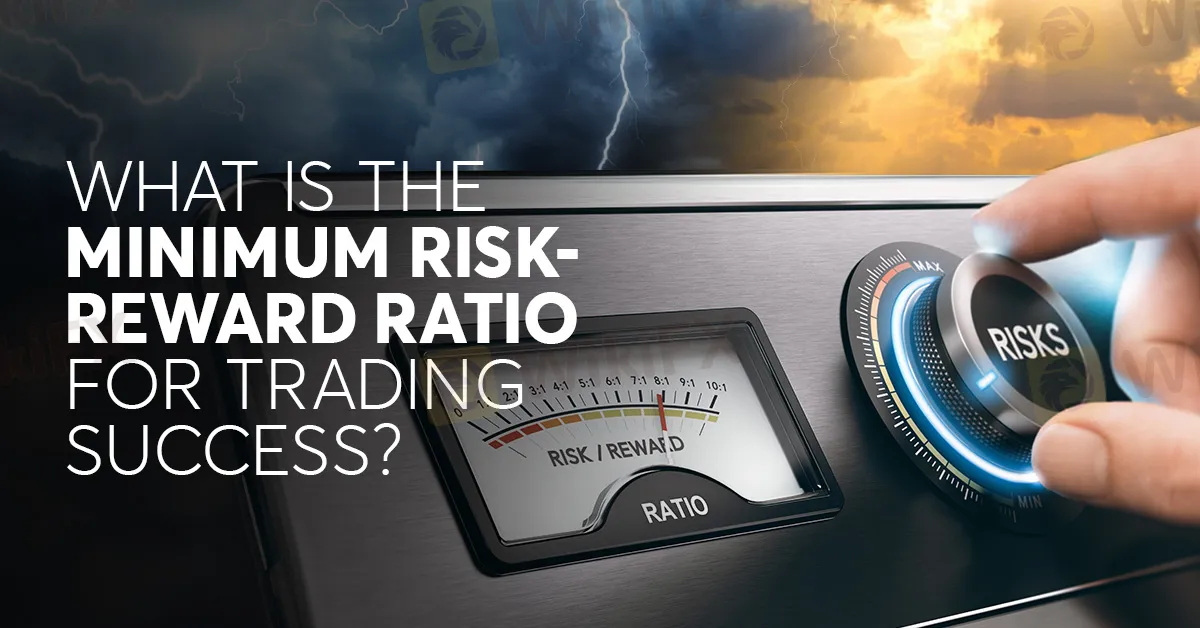简体中文
繁體中文
English
Pусский
日本語
ภาษาไทย
Tiếng Việt
Bahasa Indonesia
Español
हिन्दी
Filippiiniläinen
Français
Deutsch
Português
Türkçe
한국어
العربية
What is The Minimum Risk-Reward Ratio for Trading Success?
Abstract:What exactly is the minimum risk-reward ratio that traders should aim for to achieve success?

In the world of forex trading, success is often measured by the ability to navigate the intricate balance between risk and reward. Understanding and implementing an effective risk-reward ratio can be the cornerstone of a trader's strategy, determining the difference between profitability and losses. But what exactly is the minimum risk-reward ratio that traders should aim for to achieve success?
The risk-reward ratio is a fundamental principle that quantifies the potential profit against the potential loss in a trade. It represents the relationship between the amount a trader is willing to risk (stop-loss) compared to the potential reward (take-profit). A risk-reward ratio of 1:2, for example, means risking one unit to potentially gain two units.
While there isn't a one-size-fits-all minimum risk-reward ratio that guarantees success, a commonly recommended ratio is 1:2 or higher. Here's why:
Successful trading isn't just about making profits; it's about managing risk effectively. A favourable risk-reward ratio helps traders to mitigate losses and preserve capital. By setting a ratio where the potential reward is at least twice the risk, traders can maintain profitability even if they're right only half the time.
Consistency is key in trading. A sound risk-reward ratio provides a framework for consistent decision-making. It encourages disciplined trading, allowing traders to stick to their strategy without being swayed by emotions or impulsive actions.

Market conditions are dynamic, and volatility is inherent in the forex market. A risk-reward ratio of 1:2 or higher allows traders to adapt to varying market conditions. In highly volatile markets, a wider ratio might be more suitable to accommodate larger price swings.
While a 1:2 risk-reward ratio is often recommended, traders should consider their individual trading styles, risk tolerance, and the specific market they're trading in. Some traders might opt for a higher ratio, like 1:3 or 1:4, depending on their risk appetite and the prevailing market conditions.
Besides the risk-reward ratio, implementing effective risk management practices is crucial. This includes setting stop-loss orders, diversifying your portfolio, avoiding over-leveraging, and continuously monitoring and adjusting your strategy.
While aiming for a minimum risk-reward ratio of 1:2 is a prudent guideline, successful trading encompasses a multitude of factors beyond this ratio alone. It's essential to remember that trading involves inherent risks, and no ratio can guarantee success. Traders must combine their risk-reward ratio with a comprehensive strategy, market analysis, and disciplined execution to achieve success in the forex market.
Ultimately, each trader should find a risk-reward ratio that aligns with their trading goals, risk tolerance, and market conditions, acknowledging that adaptability and continuous learning are key to navigating the ever-evolving landscape of forex trading.

Disclaimer:
The views in this article only represent the author's personal views, and do not constitute investment advice on this platform. This platform does not guarantee the accuracy, completeness and timeliness of the information in the article, and will not be liable for any loss caused by the use of or reliance on the information in the article.
Read more

Advanced Forex Trading Strategies for Competitive Markets
The foreign exchange (forex) market is the largest and most liquid financial market in the world, with trillions of dollars traded daily. For traders, this presents both opportunities and challenges. While the potential for profit is significant, the competitive nature of the market demands a sophisticated approach. To thrive in this environment, traders must adopt advanced strategies that go beyond the basics. This article explores key techniques, including understanding market trends, mastering technical indicators, trading breakouts and reversals, and building a robust trading plan for consistency.

The Top 5 Brokers of February 2025 Selected by WikiFX
The world of forex and CFD trading is ever-evolving, and choosing the right broker is crucial for successful trading. As of February 2025, WikiFX has compiled a list of the top 5 brokers that have earned their place based on regulatory credibility, trading conditions, and overall customer satisfaction. Here are the top 5 brokers for February 2025.

AXEL Broker: Is It Worth Your Trust?
Registered in Canada, AXEL Private Market Limited (short for “AXEL”) is a brokerage firm offering its clients the popular MT4 trading platform and providing currency pairs, commodities, stocks, indices, and cryptocurrencies to trade. The broker is regulated by the Australian Securities & Investments Commission (ASIC) and provides competitive spreads, no commissions, and flexible leverage up to 1:500.

200 Years of Market Mayhem: Every Major Financial Crisis Explained
Financial crises have shaped economies for centuries, often leaving a trail of devastation in their wake. While each crisis has its own unique causes, recurring themes, such as speculation, regulatory failures, and external shocks, continue to threaten global markets. This article explores the most significant financial collapses in history, revealing the patterns that link past crises to modern financial instability.
WikiFX Broker
Latest News
Thailand Cracks Down on Online Scam Centers, Rescuing 260 Victims
Trump signed an order to implement reciprocal tariff actions
Checkout! List of FCA-Warned Brokers
Trump tariff VAT threat raises prospects of hit to UK
Advanced Forex Trading Strategies for Competitive Markets
Donald Trump name changes from the Gulf of America to Fort Bragg
Shocking! Platform Steals User's $506 with Deceptive Tactics
IG Group to Shut Down IG Community by February 28, 2025
Complaint Against GlobTFX
Inflation is Here—How Will It Hit Stocks, Forex, Crypto, and Commodities?
Currency Calculator






